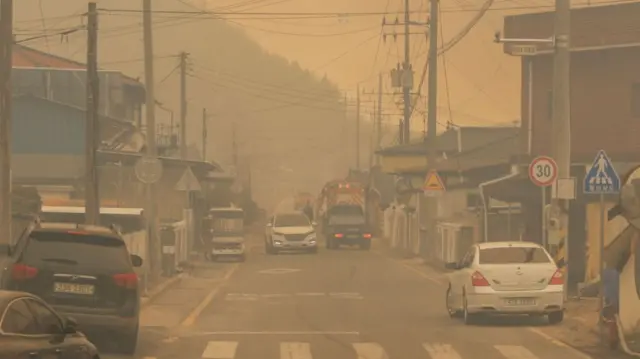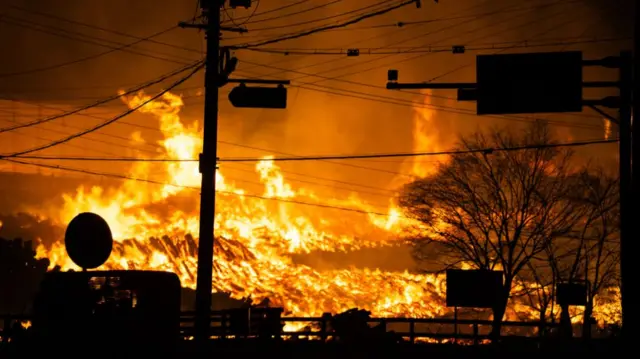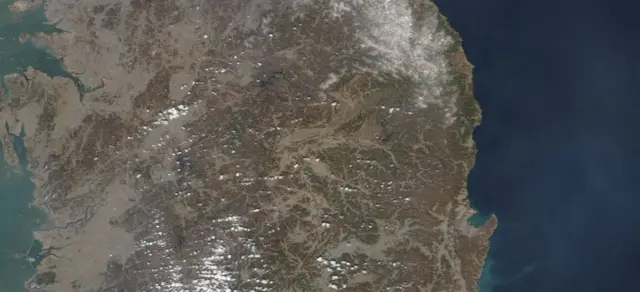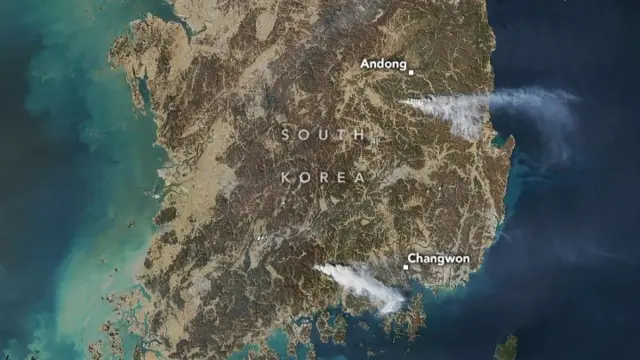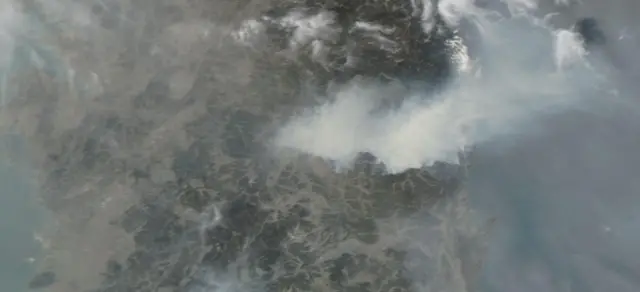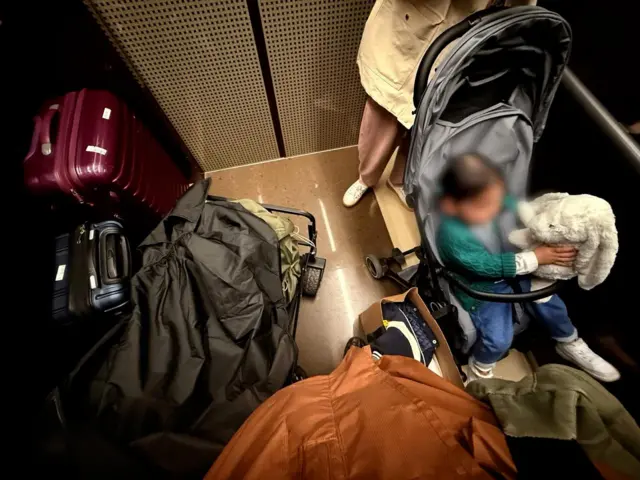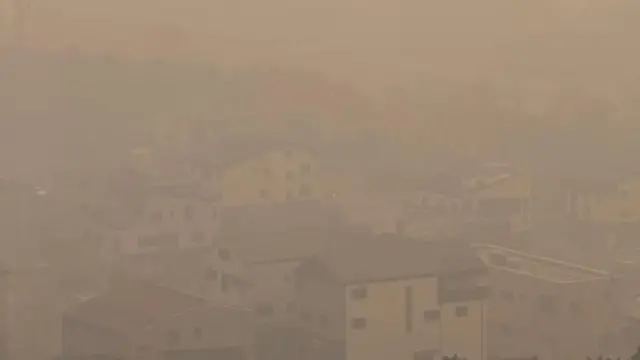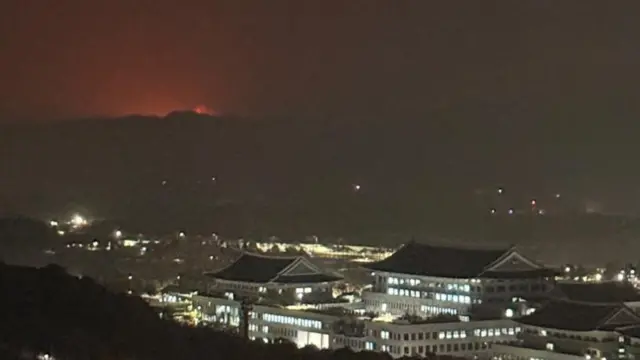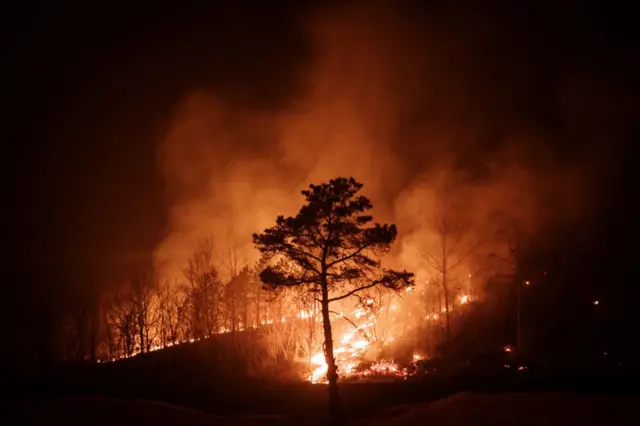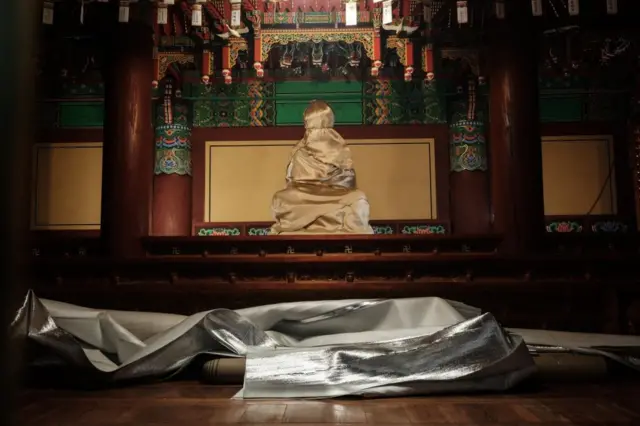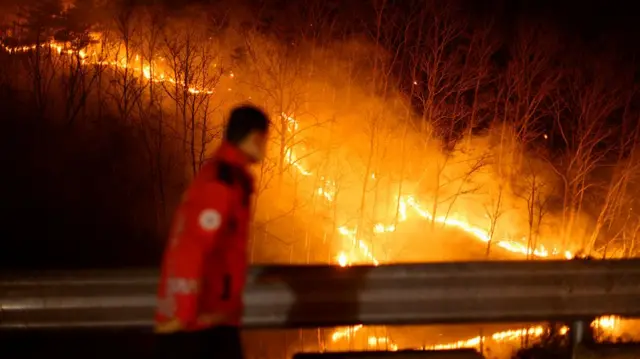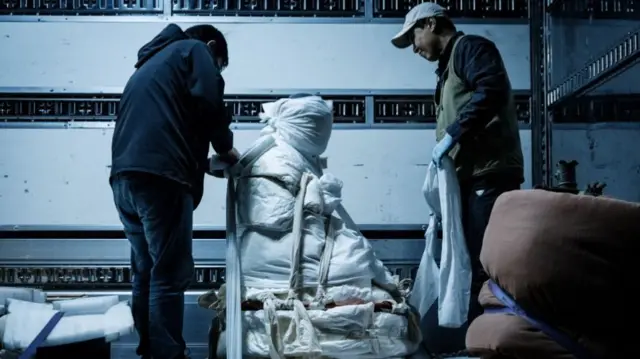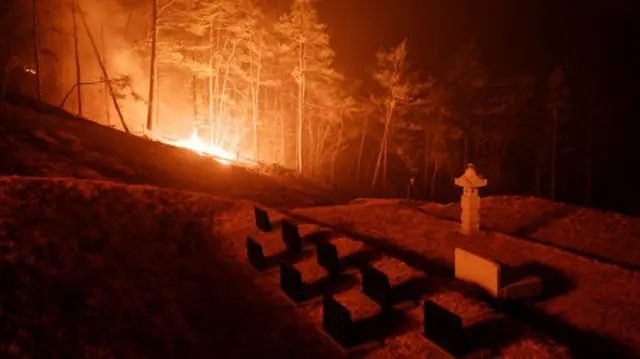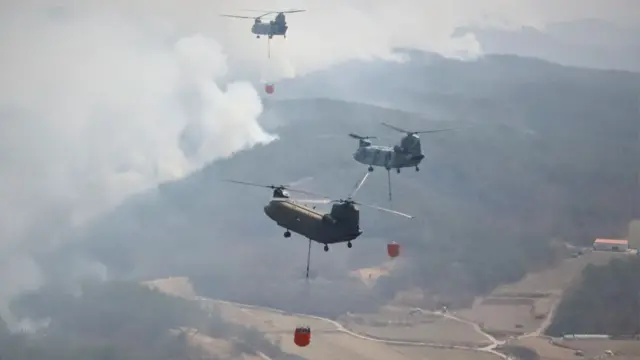Scenes of devastation as fires raze homes and districtspublished at 05:47 GMT 27 March
The deadly fires, fuelled by strong winds and dry land, have engulfed entire neighbourhoods and charred some religious landmarks. Twenty-six people have been killed while the inferno rages. These are some apocalyptic scenes from the ground.
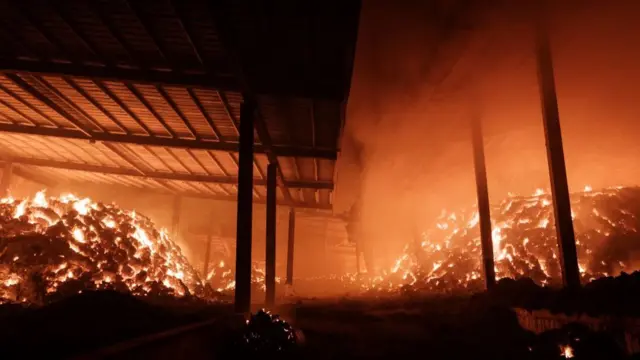 Image source, Getty Images
Image source, Getty ImagesA cattle feed manufacturing plant enguled by flames on Wednesday
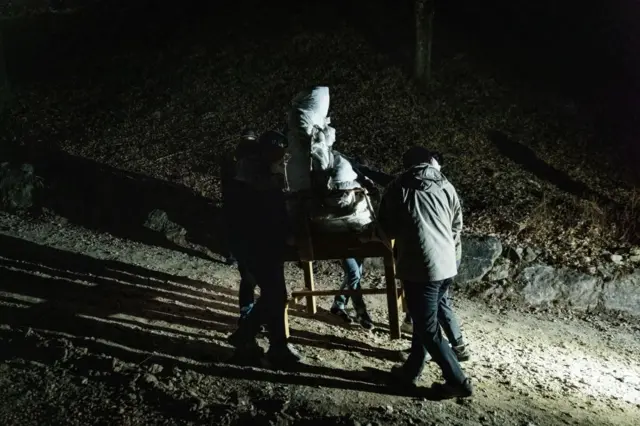 Image source, Getty Images
Image source, Getty ImagesMen carry packed Buddha statues away from the Bongjeong Temple as wildfires approach
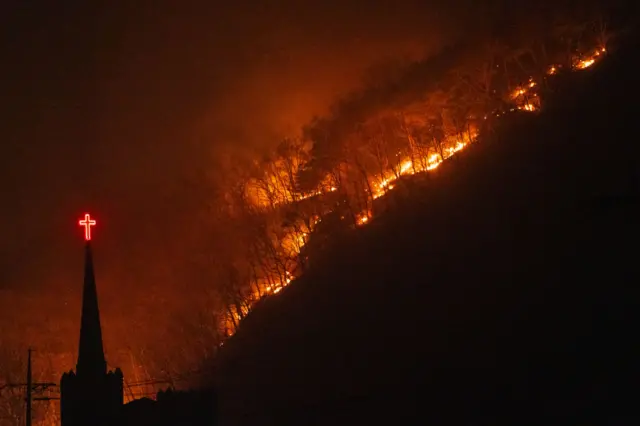 Image source, Getty Images
Image source, Getty ImagesFlames sprint down a hillside in Andong
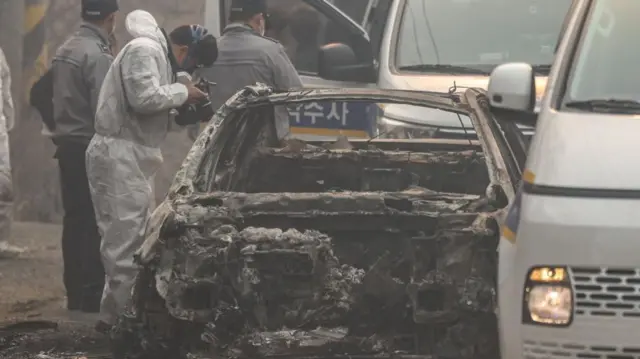 Image source, EPA
Image source, EPAOfficers examine a burnt-out car along the road in North Gyeongsang province
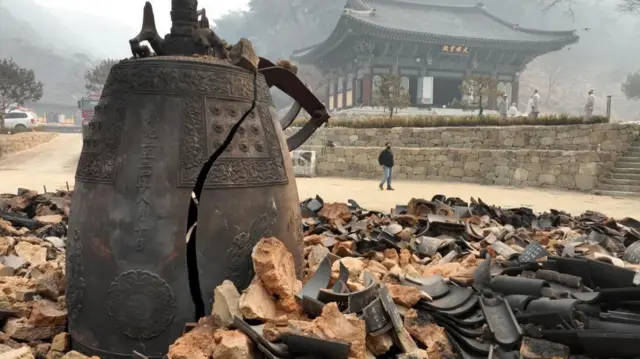 Image source, EPA
Image source, EPAThis cracked bell at Goun Temple in the North Gyeongsang, where many other structures have been burned to the ground

